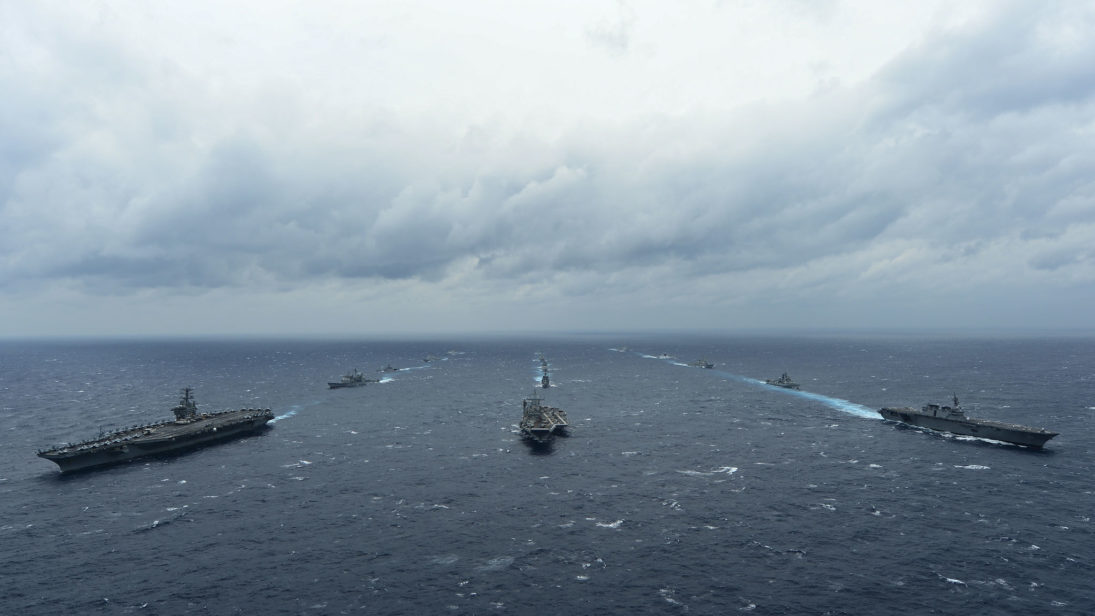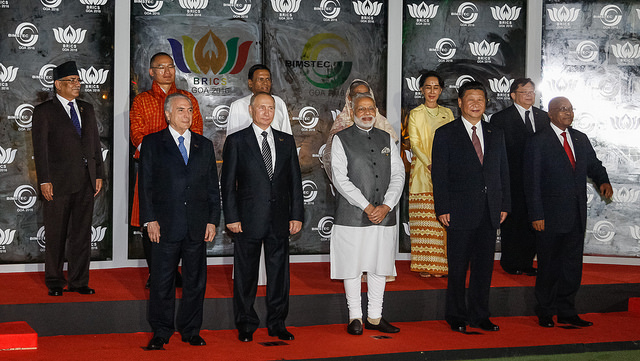
Situated between South and Southeast Asia amid the vital sea routes linking the Indian Ocean to the Straits of Malacca, the Bay of Bengal has become increasingly important to India’s geopolitical calculus. New Delhi’s interests in the Bay of Bengal can be broadly viewed in two ways: first, India sees the bay as a sea-bridge to the east, through which New Delhi can unlock greater political, economic, and strategic cooperation between itself, its neighborhood, and the Asia-Pacific. Second, against the backdrop of increasing Chinese footprint in the Bay of Bengal, it is in India’s interest to uphold a stable, rules-based maritime order in the region to secure the flow of goods along vital sea routes and the freedom of navigation for the Indian Navy. Given New Delhi’s interests in the region, it is time that India reprioritizes the Bay of Bengal as the centerpiece for its relations in South Asia and a springboard to venture further east.
Boosting Act East and Neighborhood First
The Bay of Bengal, by virtue of its geography, has the potential to bolster ties between India, the South Asian neighborhood, and the Asia-Pacific. This fact has not gone unnoticed in India: in June 2017, Prime Minister Narendra Modi declared the Bay of Bengal Initiative for Multi-Sectoral Technical and Economic Cooperation (BIMSTEC) a “natural platform to fulfill our key foreign policy priorities of Neighborhood First and Act East.” Indeed, a renewed focus on the Bay of Bengal through BIMSTEC—a multilateral organization consisting of India, Bangladesh, Bhutan, Myanmar, Nepal, Sri Lanka, and Thailand—has the potential to bolster both India’s Neighborhood First Policy, which gives importance to its immediate neighbors, and its Act East Policy, which aims to strengthen New Delhi’s engagement with its extended neighborhood to its east. As an organization exclusively structured around the bay, BIMSTEC could be India’s vehicle for greater economic cooperation in the region by linking Bhutan and Nepal to the Indian Ocean, integrating India’s Northeast with Southeast Asia, and deepening India’s economic ties with Bangladesh and Sri Lanka. Yet, even after twenty years of its existence, it remains an underperforming organization and the Bay of Bengal persists as one of the world’s least economically integrated regions.
In this regard, New Delhi’s renewed effort to build a stronger BIMSTEC will be an important step in institutionalizing a regional architecture for the Bay of Bengal. However, India’s commitment for a stronger BIMSTEC must be matched by the political will to provide leadership to the organization. First, India has to give proactive salience to BIMSTEC by regularizing meetings and expediting the signing of the BIMSTEC-Free Trade Agreement (FTA) to facilitate greater economic ties. Second, it has to boost connectivity and infrastructural opportunities in the region, ensuring that projects like the Kaladan Multi-Modal Project and India-Myanmar-Thailand Highway are completed without delays. At the same time, New Delhi has to take a stand on whether it wants to engage with China in the region by pursuing the Bangladesh-China-India-Myanmar (BCIM) economic corridor. Third, India has to put new initiatives on the table, like Project Mausam, to link the states around the Bay of Bengal.

Securing a Rules-based Maritime Order
New Delhi’s interest in establishing a rules-based maritime order, while applicable to the Indian Ocean as a whole, applies to the Bay of Bengal in two ways. First, India has an interest in protecting the Sea Line of Communication (SLOC) in the Bay of Bengal from the threat of maritime terrorism, piracy, and natural disasters to meet its growing energy demands. For this reason, India is seeking to cement its role as a net-security provider in the region through platforms like the Indian Ocean Naval Symposium (IONS), which provides a forum for the “discussion of regionally relevant maritime issues,” and Exercise MILAN, a biennial naval exercise in which many of the littoral states of the Bay of Bengal participate.
Second, given the increasing Chinese presence and Beijing’s disregard for the liberal maritime order, a rules-based order can prevent the excessive militarization of the Bay of Bengal. Beijing, given its so-called “Malacca Dilemma,” seeks to link the Bay of Bengal to its mainland. A growing Chinese naval presence in the Indian Ocean to secure its energy demands, along with the revival of the Maritime Silk Road, has altered the strategic configuration of the region. It seems India and China are on the brink of strategic competition for naval dominance as well as influence in the Indian Ocean’s littoral states.
Thus, an India-led rules-based maritime order would promote stability in the Bay of Bengal, a maritime arena whose growing strategic importance is undeniable as the concept of a “free and open Indo-Pacific” gains prominence. Yet, the solely economic focus of BIMSTEC limits how far the group of nations can go in promoting a rules-based maritime order. India should go beyond the mandate of BIMSTEC, leading the charge on crafting a framework for regional and extra-regional actors alike to operate as a security community bound together by agreed upon rules on the freedom of navigation and equitable burden-sharing in Humanitarian Aid and Disaster Relief (HADR) throughout the Bay of Bengal.
Beyond Traditional Security Interests
Instead of restricting itself only to fundamental security issues in the Bay of Bengal, New Delhi must carve out a mental map of the Bay of Bengal that prioritizes the idea of a community within South and Southeast Asia sharing the same waters and the same opportunities, threats, and risks. Not only would this bolster economic interdependence and promote a strategic consensus in the region, but it would also help India to solidify its role as a regional leader. One way to accomplish this is by engaging Bay of Bengal states on the issue of climate change. Presently, India engages in technical information sharing for disaster management. Given the high risks of climate change and natural calamities faced by the littoral states in the Bay of Bengal, New Delhi could display its leadership, confront a common threat, and bolster inter-regional cooperation by initiating a climate security agreement through BIMSTEC.
Conclusion
India can institutionalize a regional architecture in the Bay of Bengal that is geographically coherent, economically productive, and strategically stable. In doing so, New Delhi must accord increased salience to BIMSTEC while laying the foundations for a maritime security community in the region to meet its own strategic and economic needs and balance Chinese influence. However, India must realize that whether it can accomplish its aims in the Bay of Bengal will depend on three aspects: the political will among states to pursue connectivity and infrastructure initiatives, mutual trust to resolve contentious issues from within, and a shared vision that is built on a strategic consensus. New Delhi must push forward these ideals in any effort it undertakes in the Bay of Bengal.
***
Image 1: U.S. Pacific Command via Flickr
Image 2: Michel Temer via Flickr


